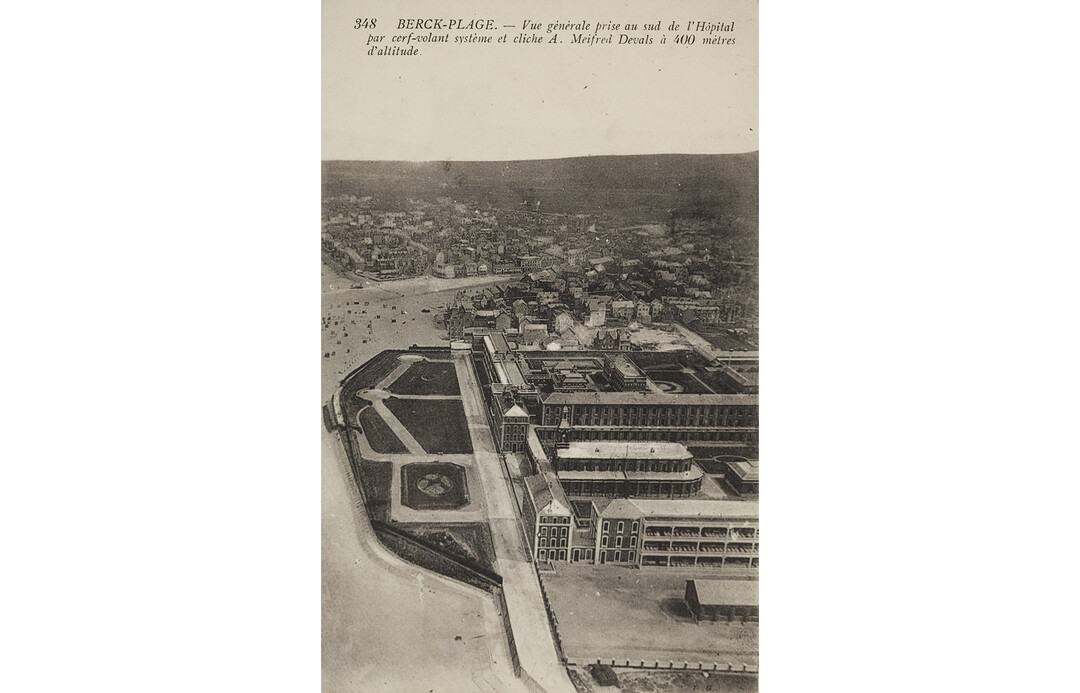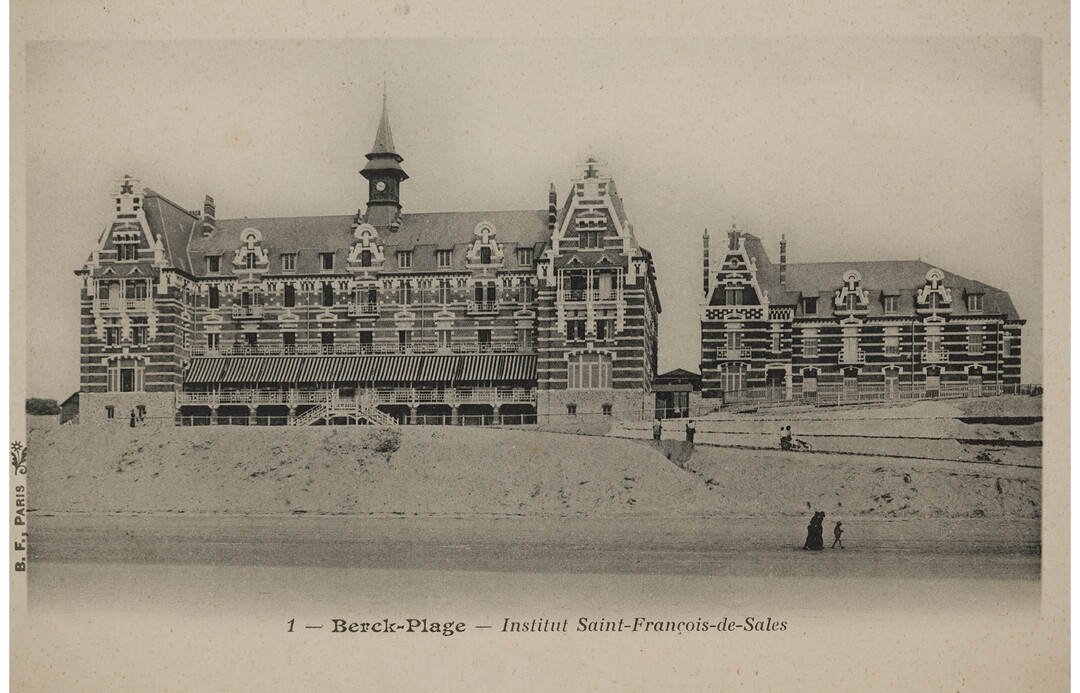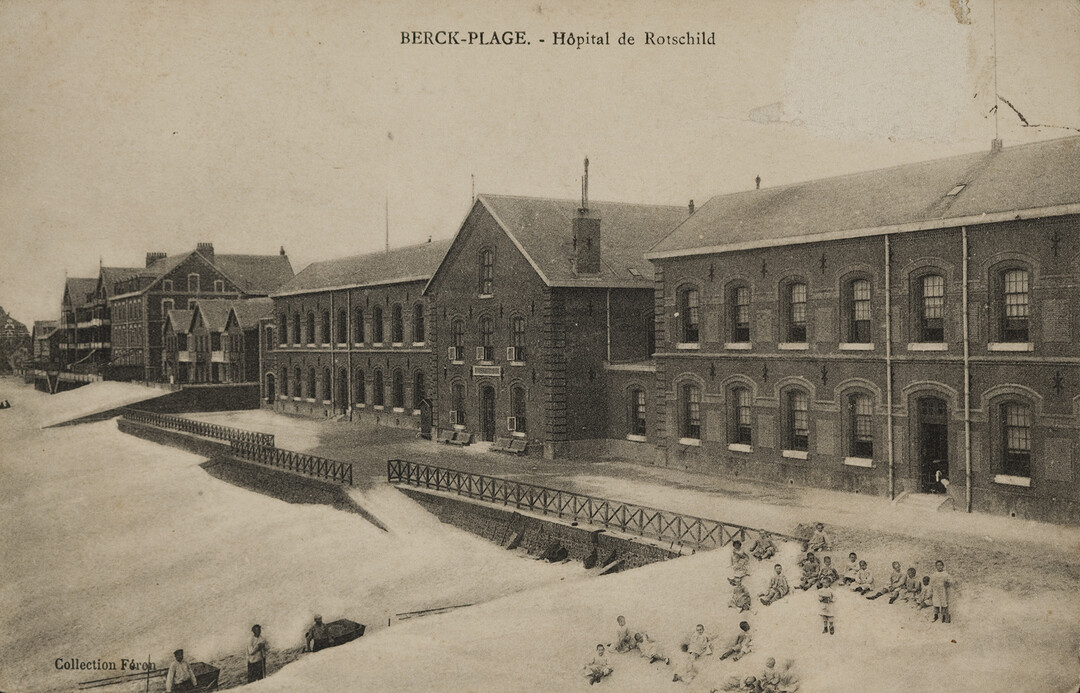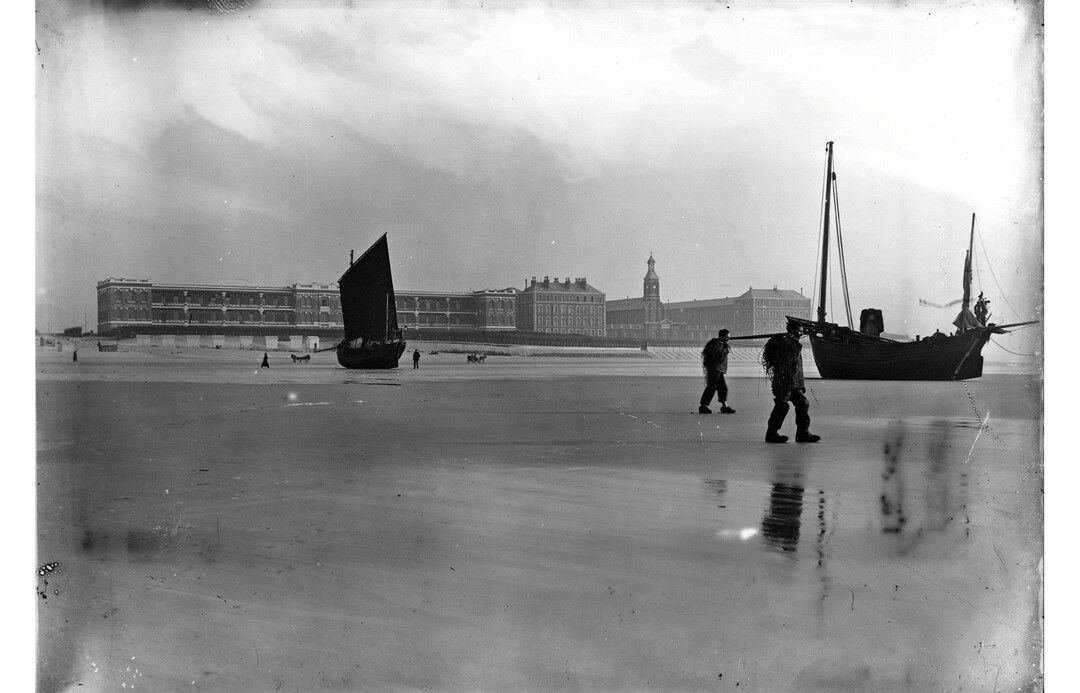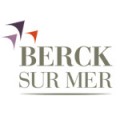Although Doctor Jules Danvin was the first to test the marine cure, it was his colleague Paul Perrochaud who conducted the first real experiments in 1857, entrusting a group of children to the widow Duhamel de Groffliers and then to Marianne Brillard, known as "Marianne Toute Seule".
The trials were conclusive and in 1861 construction began on the small wooden hospital designed by Emile Lavezzari. As it soon became too small, it was decided to build a larger hospital, again based on Lavezzari's plans. Work began in 1867 and on 18 July 1869, Empress Eugénie inaugurated the new building, which was named Hôpital Napoléon. In 1870, it was renamed the Hôpital Maritime de la Ville de Paris and in 1961 the Hôpital Maritime de Berck-sur-Mer. Initially devoted exclusively to the care of children, the establishment is now a full inpatient adult follow-up care and rehabilitation centre.
From the 1870s onwards, more and more nursing homes, sanatoria and hospitals were built: 1872 Hôpital Nathaniel-de-Rothschild, 1892 Hôpital Cazin-Perrochaud, 1901 Institut Calot, 1902 L'Hôpital Bouville 2... making Berck a hospital town in its own right.
